 Development Tools
Development Tools
 git
git
 Introducing the three working methods of Git and Git workflow demonstration
Introducing the three working methods of Git and Git workflow demonstration
Introducing the three working methods of Git and Git workflow demonstration
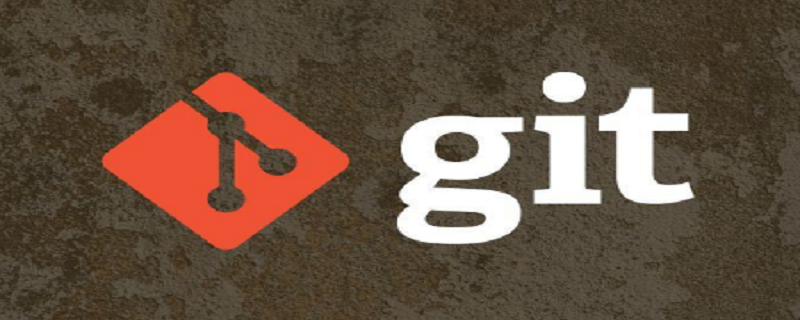
Recommended (free): Git Tutorial
##Article Directory
- Centralized workflow (not commonly used)
- Forking workflow (occasionally used)
- GitFlow workflow (most popular)
- Git workflow demonstration
There are three ways to use
Git during project development, namely centralized workflow and Git Flow workflow , Forking Workflow. The following mainly explains the Git workflow.
Centralized workflow (not commonly used)
Centralized workflow, likeSVN, uses the central warehouse as the single point for all modifications to the project entity. All changes are submitted to the Master branch. The main difference between this method and SVN is that developers have local libraries, but many features of Git are not used. 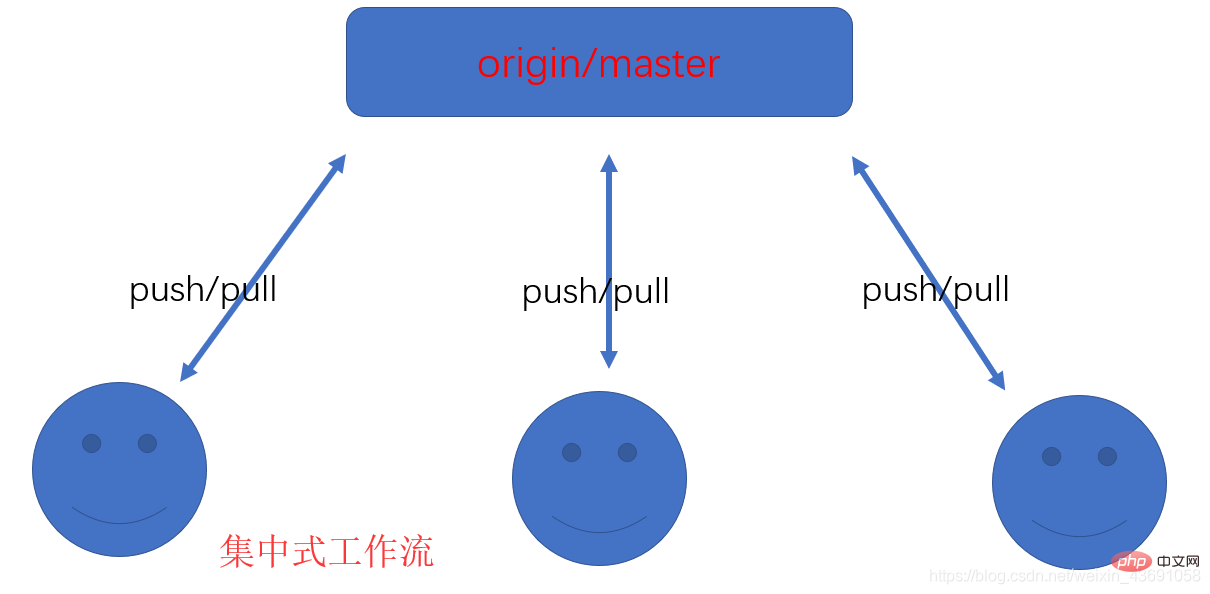
Forking workflow (occasionally used)
Forking workflow is based on GitFlow and makes full use of Git'sFork and pull request functions to achieve the purpose of code review. It is more suitable for developers who can manage large teams safely and reliably, and can accept submissions from untrusted contributors. (It is mainly used to review the code of members outside the team, and Linux virtual teams use it more).

GitFlow workflow (most popular)
Gitflow Workflows are established for feature development, release preparation, and maintenance Independent branches are created to make the release iteration process smoother and make full use of the characteristics of branches. The strict branching model also provides some much needed structure for large projects. The following picture is a complete development method diagram, but the actual development may be more streamlined: 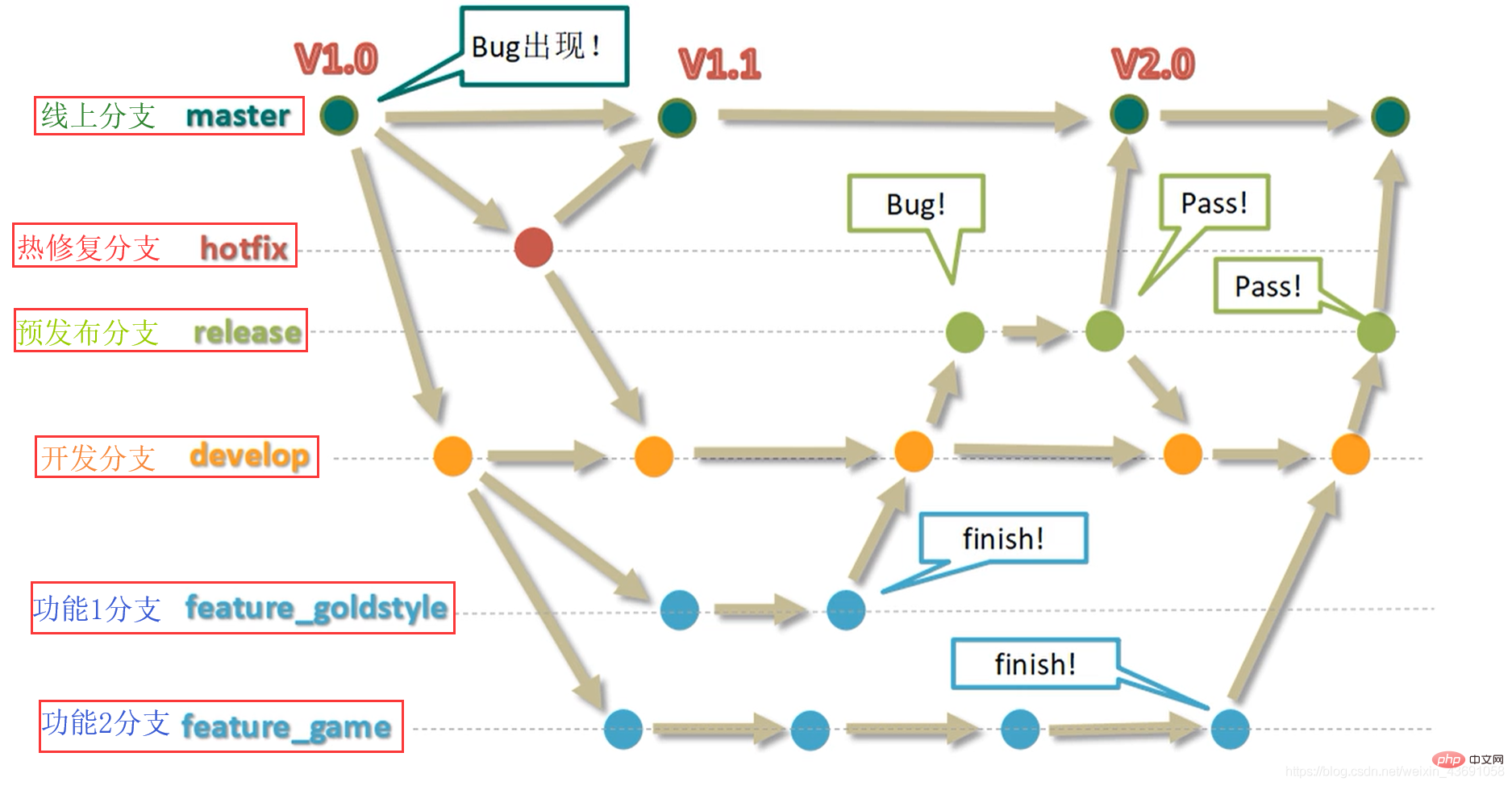
Git workflow demonstration
Demonstration instructions: 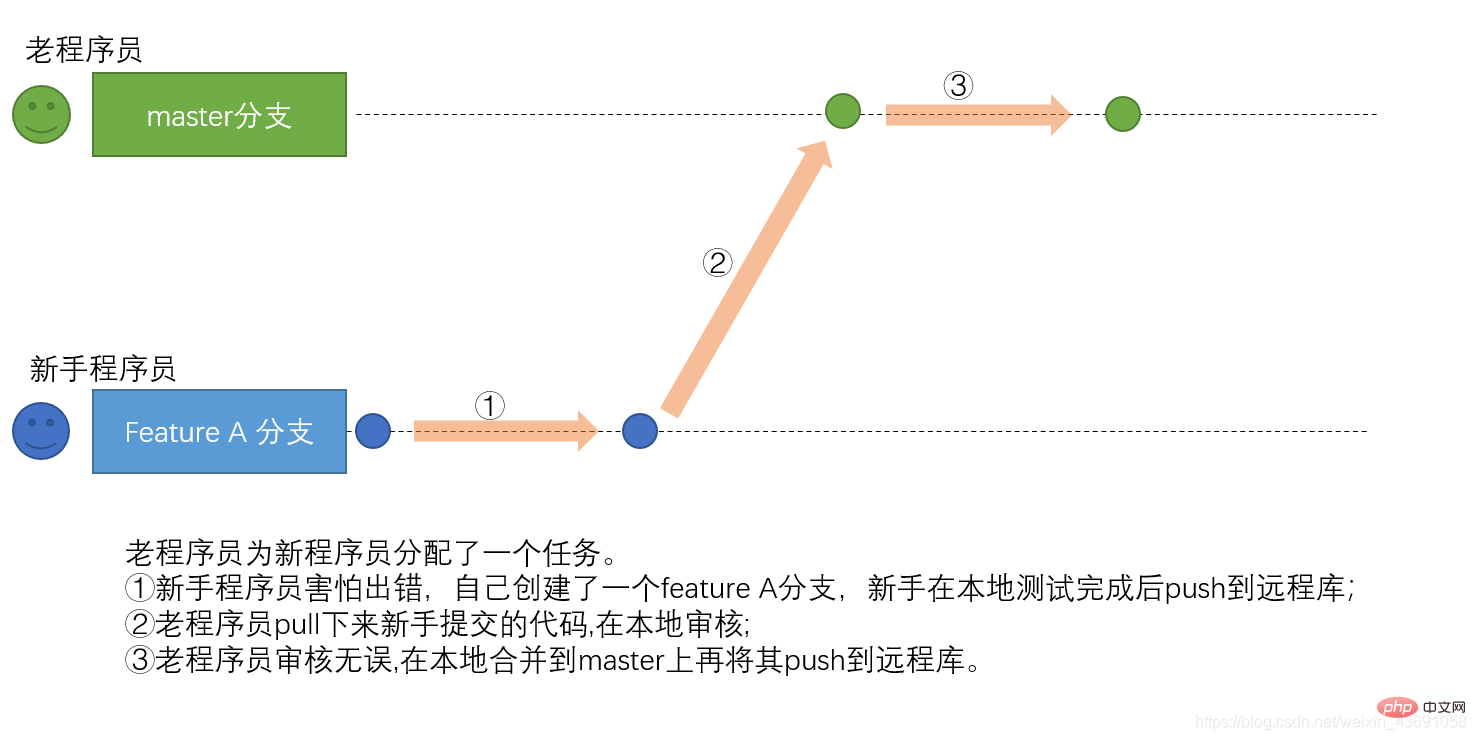
Create a branch in Eclipse and name it
featureA branch: 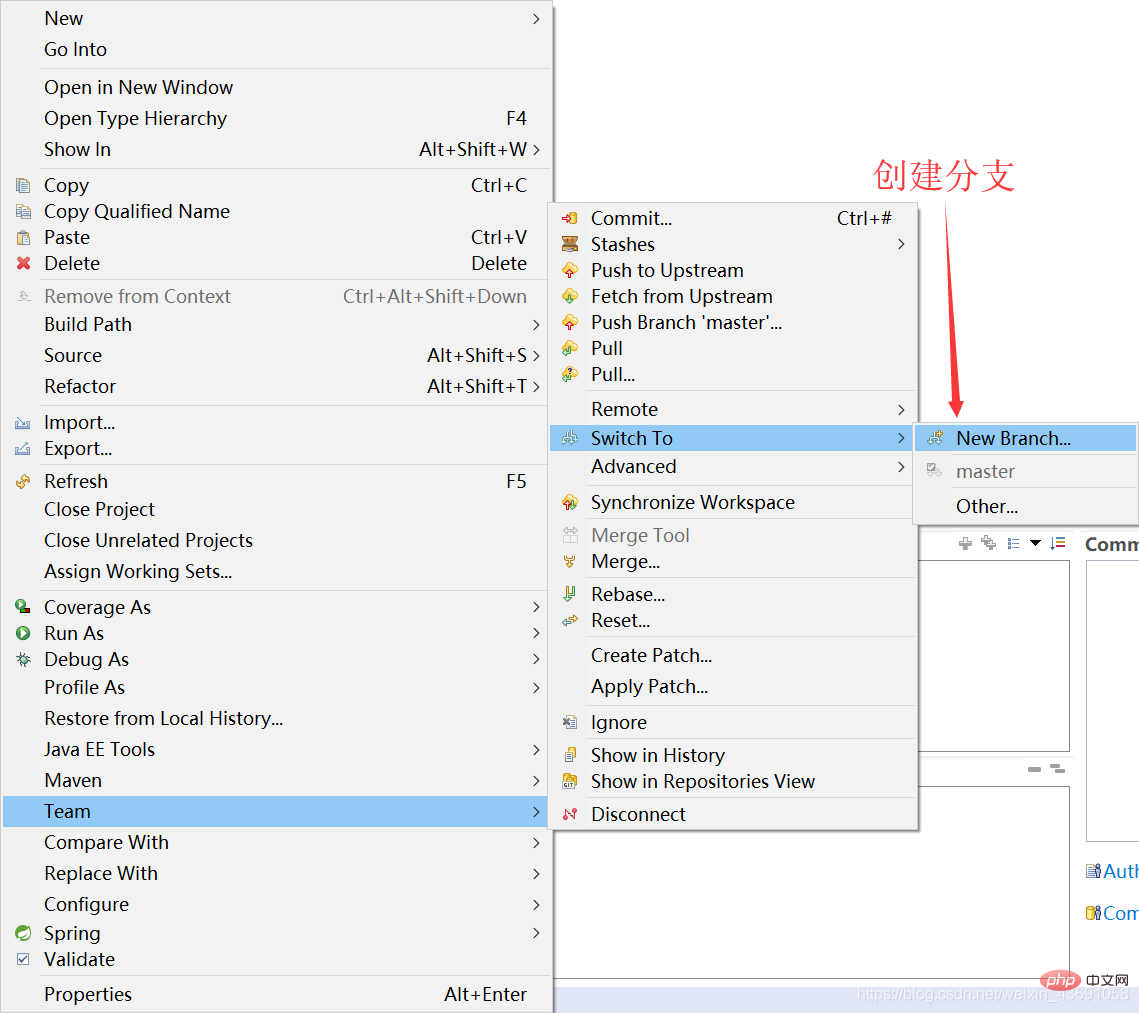 Newbies in featureA branch After completing function A, submit it to the local library:
Newbies in featureA branch After completing function A, submit it to the local library:
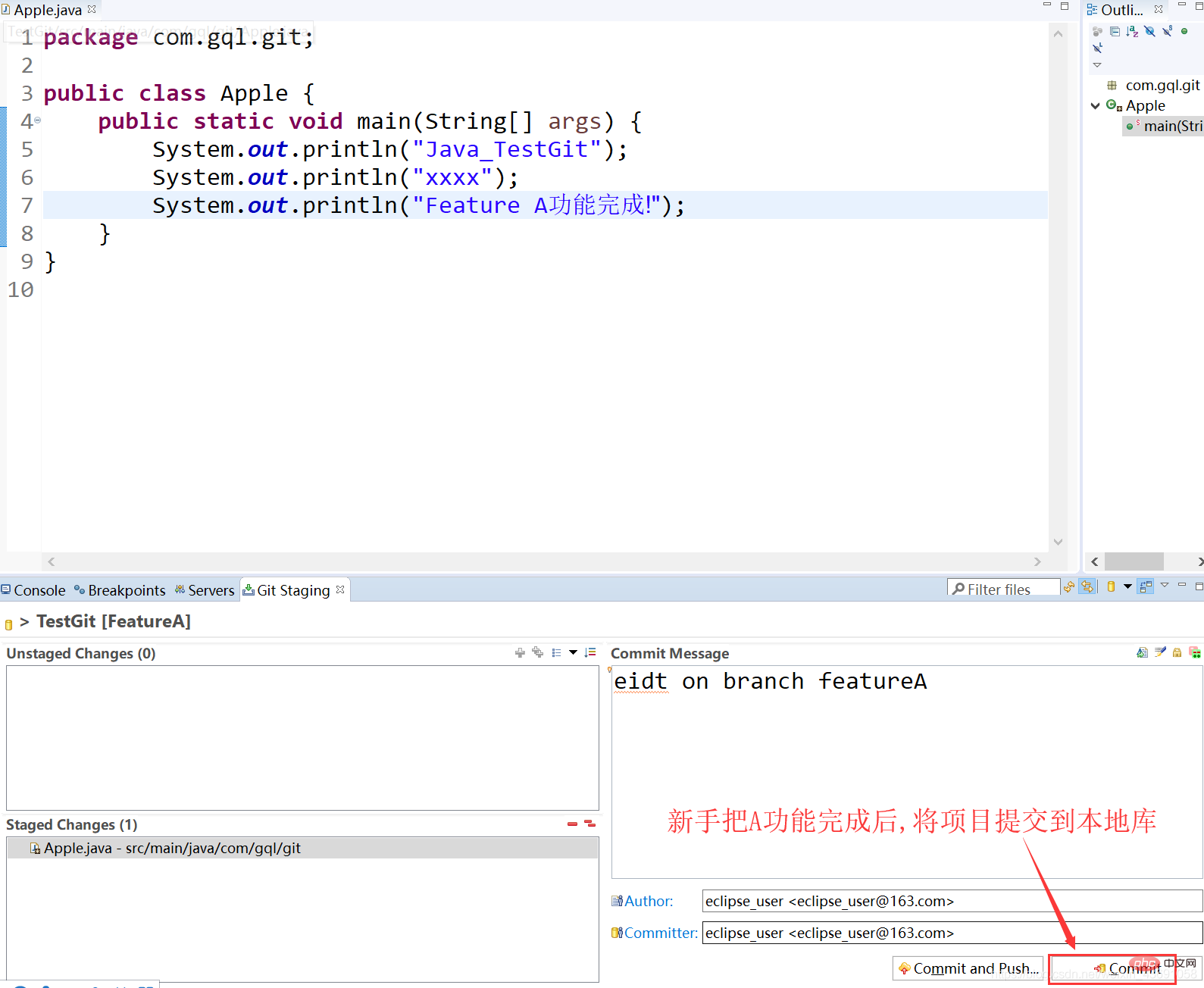 and then push to the remote library:
and then push to the remote library: 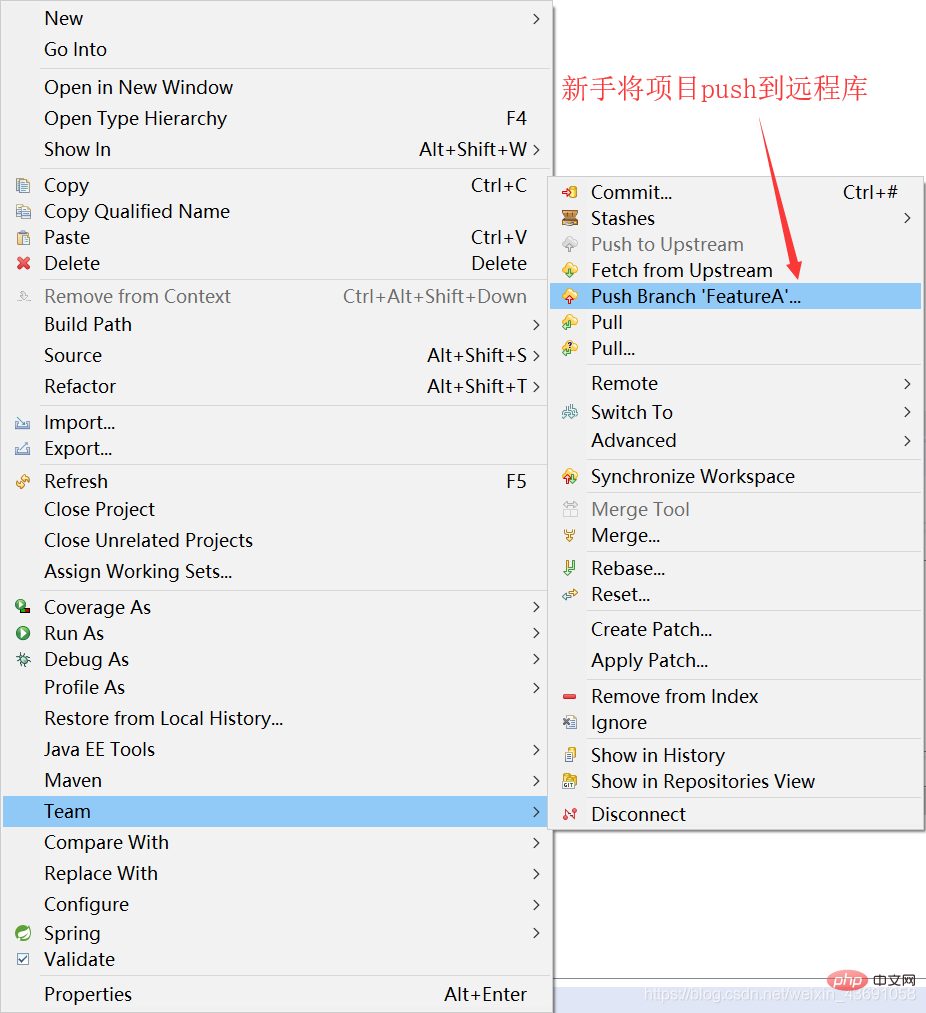 Next, the veteran programmer pulls the project:
Next, the veteran programmer pulls the project: 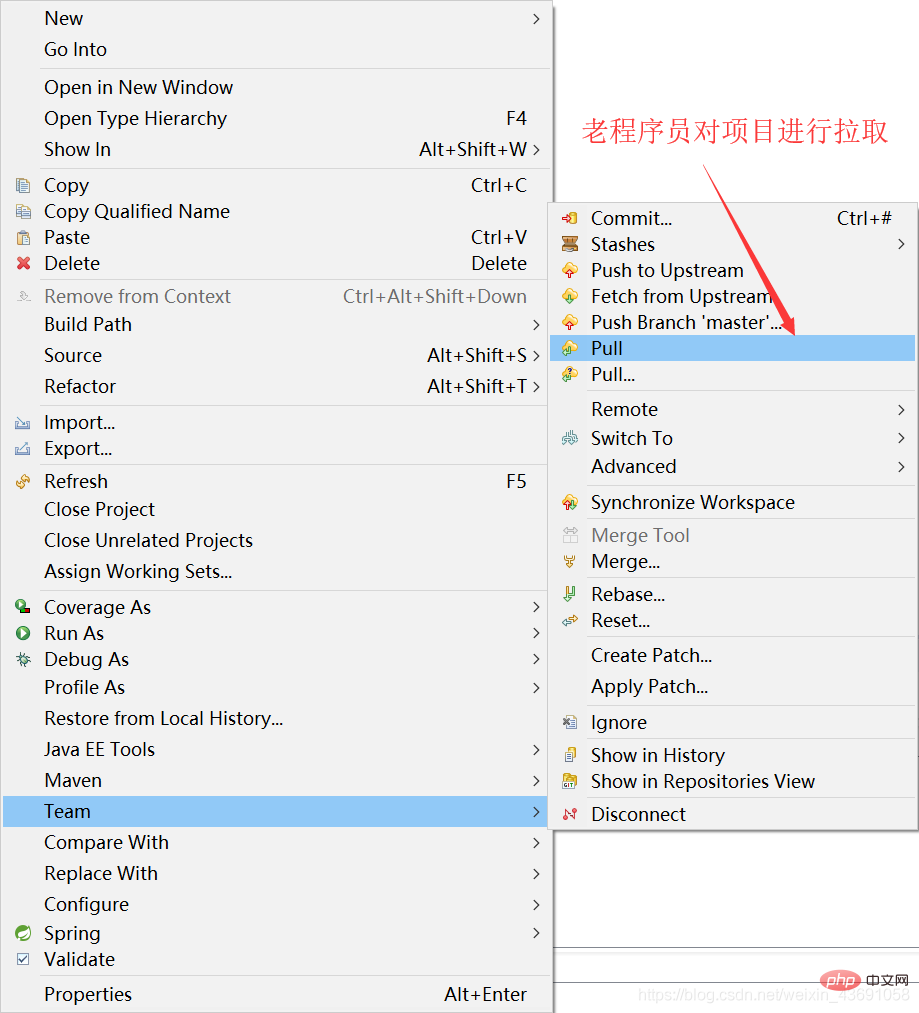 After pulling, switch from the master branch to the FeatureA branch. At this time, you can see the novice’s modifications:
After pulling, switch from the master branch to the FeatureA branch. At this time, you can see the novice’s modifications:
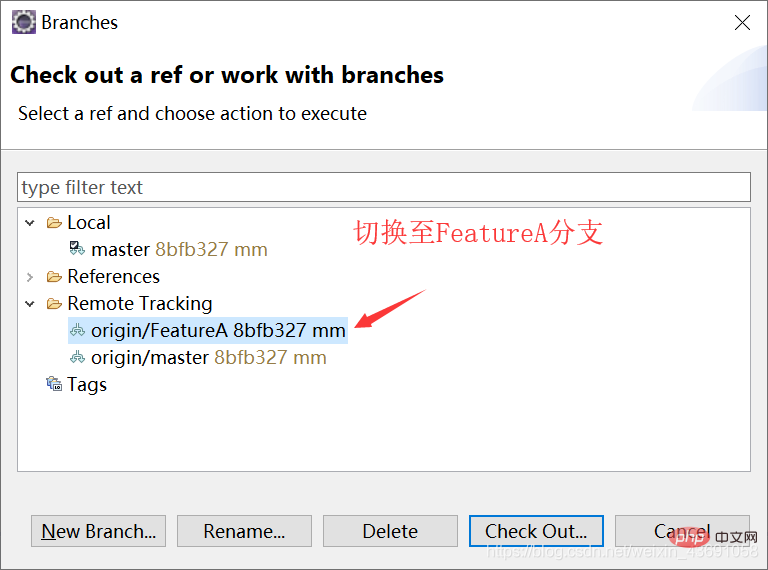

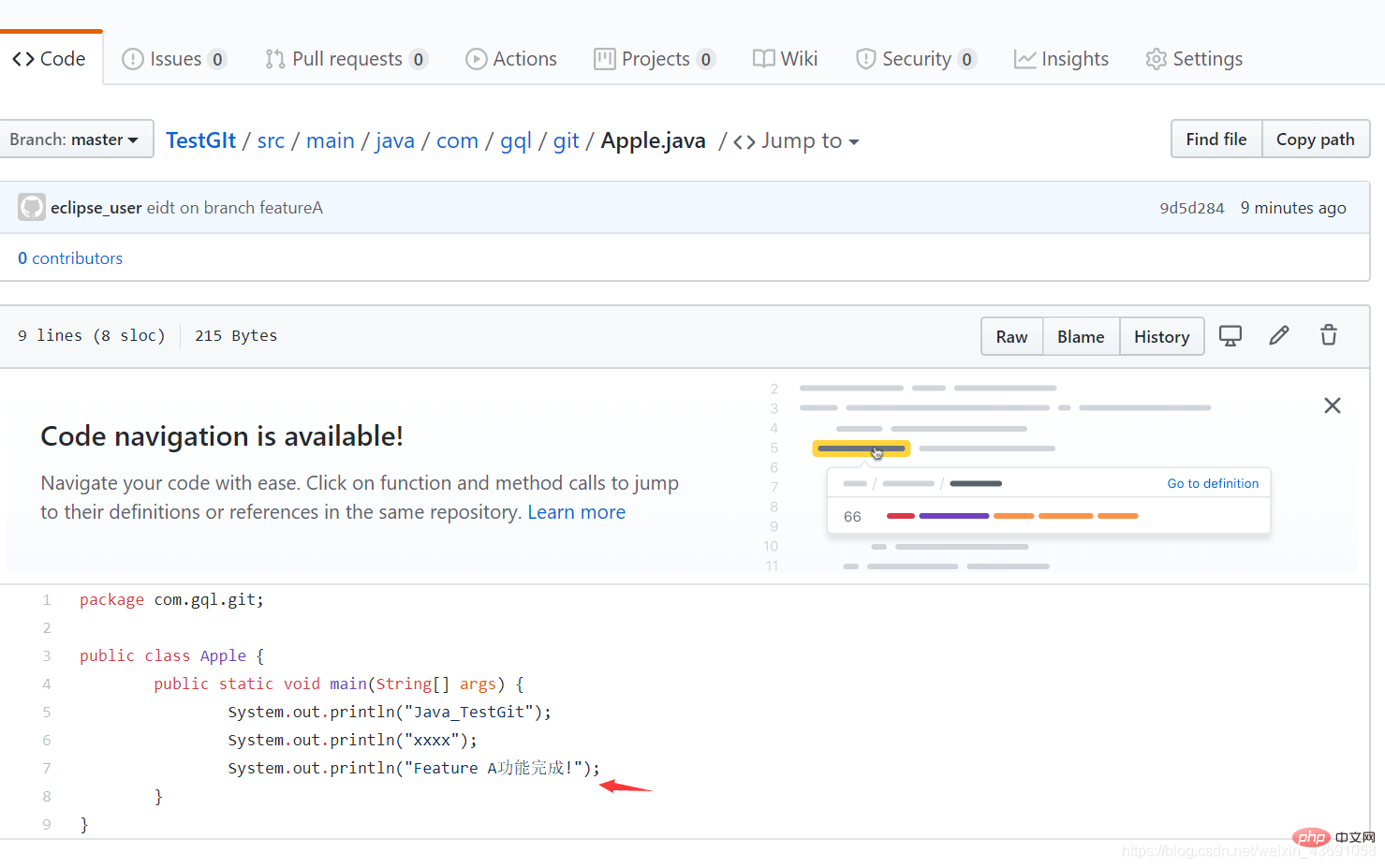
The above is the detailed content of Introducing the three working methods of Git and Git workflow demonstration. For more information, please follow other related articles on the PHP Chinese website!

Hot AI Tools

Undresser.AI Undress
AI-powered app for creating realistic nude photos

AI Clothes Remover
Online AI tool for removing clothes from photos.

Undress AI Tool
Undress images for free

Clothoff.io
AI clothes remover

Video Face Swap
Swap faces in any video effortlessly with our completely free AI face swap tool!

Hot Article

Hot Tools

Notepad++7.3.1
Easy-to-use and free code editor

SublimeText3 Chinese version
Chinese version, very easy to use

Zend Studio 13.0.1
Powerful PHP integrated development environment

Dreamweaver CS6
Visual web development tools

SublimeText3 Mac version
God-level code editing software (SublimeText3)

Hot Topics
 How to download git projects to local
Apr 17, 2025 pm 04:36 PM
How to download git projects to local
Apr 17, 2025 pm 04:36 PM
To download projects locally via Git, follow these steps: Install Git. Navigate to the project directory. cloning the remote repository using the following command: git clone https://github.com/username/repository-name.git
 How to update code in git
Apr 17, 2025 pm 04:45 PM
How to update code in git
Apr 17, 2025 pm 04:45 PM
Steps to update git code: Check out code: git clone https://github.com/username/repo.git Get the latest changes: git fetch merge changes: git merge origin/master push changes (optional): git push origin master
 How to merge code in git
Apr 17, 2025 pm 04:39 PM
How to merge code in git
Apr 17, 2025 pm 04:39 PM
Git code merge process: Pull the latest changes to avoid conflicts. Switch to the branch you want to merge. Initiate a merge, specifying the branch to merge. Resolve merge conflicts (if any). Staging and commit merge, providing commit message.
 What to do if the git download is not active
Apr 17, 2025 pm 04:54 PM
What to do if the git download is not active
Apr 17, 2025 pm 04:54 PM
Resolve: When Git download speed is slow, you can take the following steps: Check the network connection and try to switch the connection method. Optimize Git configuration: Increase the POST buffer size (git config --global http.postBuffer 524288000), and reduce the low-speed limit (git config --global http.lowSpeedLimit 1000). Use a Git proxy (such as git-proxy or git-lfs-proxy). Try using a different Git client (such as Sourcetree or Github Desktop). Check for fire protection
 How to use git commit
Apr 17, 2025 pm 03:57 PM
How to use git commit
Apr 17, 2025 pm 03:57 PM
Git Commit is a command that records file changes to a Git repository to save a snapshot of the current state of the project. How to use it is as follows: Add changes to the temporary storage area Write a concise and informative submission message to save and exit the submission message to complete the submission optionally: Add a signature for the submission Use git log to view the submission content
 How to delete a repository by git
Apr 17, 2025 pm 04:03 PM
How to delete a repository by git
Apr 17, 2025 pm 04:03 PM
To delete a Git repository, follow these steps: Confirm the repository you want to delete. Local deletion of repository: Use the rm -rf command to delete its folder. Remotely delete a warehouse: Navigate to the warehouse settings, find the "Delete Warehouse" option, and confirm the operation.
 How to update local code in git
Apr 17, 2025 pm 04:48 PM
How to update local code in git
Apr 17, 2025 pm 04:48 PM
How to update local Git code? Use git fetch to pull the latest changes from the remote repository. Merge remote changes to the local branch using git merge origin/<remote branch name>. Resolve conflicts arising from mergers. Use git commit -m "Merge branch <Remote branch name>" to submit merge changes and apply updates.
 How to solve the efficient search problem in PHP projects? Typesense helps you achieve it!
Apr 17, 2025 pm 08:15 PM
How to solve the efficient search problem in PHP projects? Typesense helps you achieve it!
Apr 17, 2025 pm 08:15 PM
When developing an e-commerce website, I encountered a difficult problem: How to achieve efficient search functions in large amounts of product data? Traditional database searches are inefficient and have poor user experience. After some research, I discovered the search engine Typesense and solved this problem through its official PHP client typesense/typesense-php, which greatly improved the search performance.





